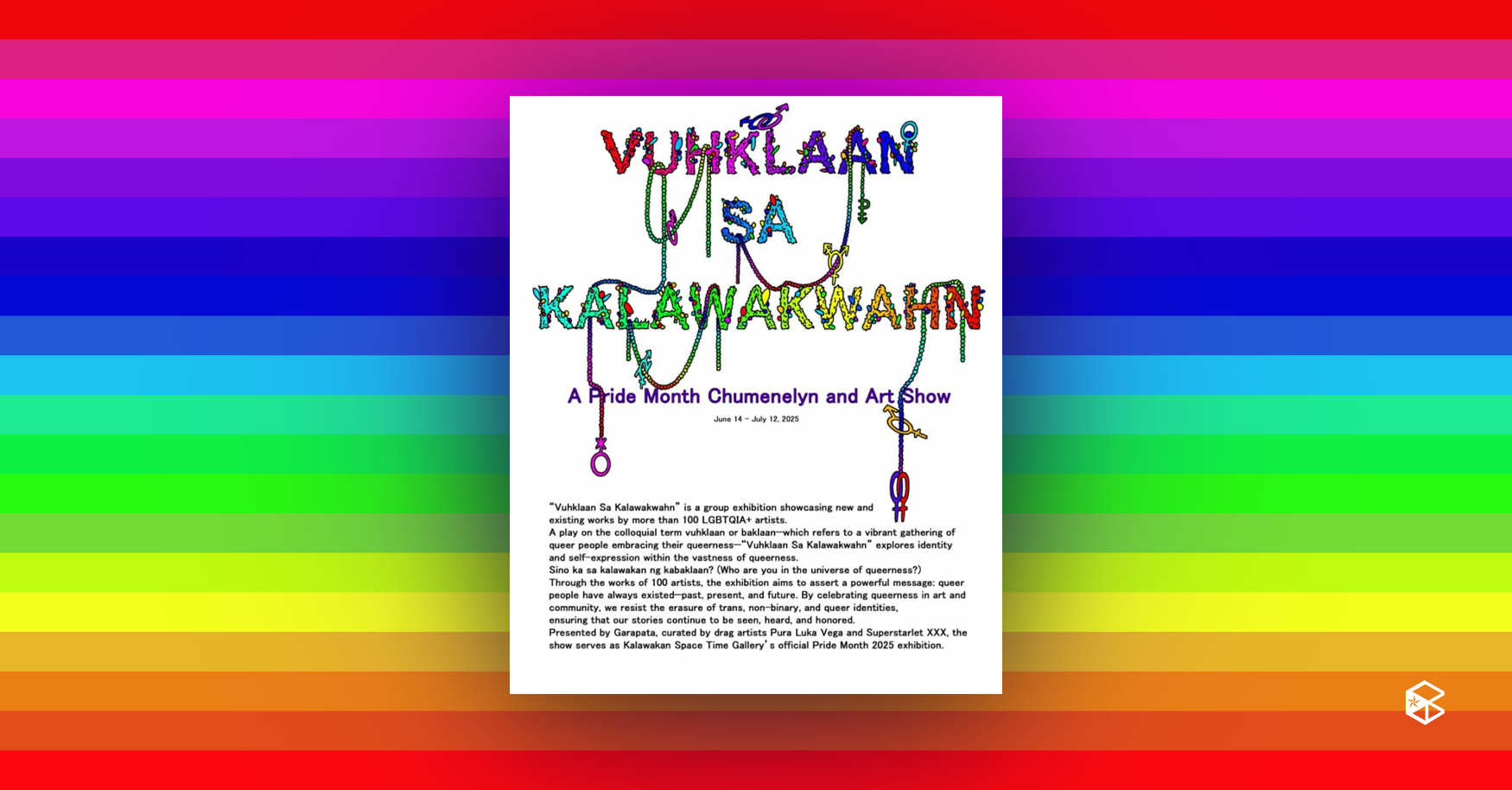With over 108 queer artists and different mediums, the group art exhibition “Vukhlaan sa Kalawakwahn” bridges the past, present, and future of the queer community. Curated by drag artists Pura Luka Vega and Superstarlet XXX and presented by Garapata, the exhibit runs from June 14 until July 25 at the Kalawakan Spacetime exhibit space.
Exploring the expansiveness of queer creativity, the exhibit brings together the works of queer creatives from under every color of the rainbow. Their goal? To be seen and remembered. The exhibit is a reminder that queerness has and will continue to exist. In its celebration of queer art and artists, the exhibit resists the erasure of these individuals and insists that their stories be seen, heard, and most importantly, honored.
The spectrum of queerness
In an interview with ID102 AB-Fashion Design and Merchandising (AB-FDM) alumnus, former Benildean Press Corps (BPC) literary editor, and exhibit contributor Mr. Santi Obcena summed up the exhibit perfectly when he said, “I think you have to view it not one by one–but, [at] the chaos of everything not working with each other. However jagged some of the pieces are, some of the people are, however soft the other people are, everything fits. So the works, they relate to each other. Because I think it's more of a shared queer experience.”
Stepping into the exhibit, attendees are greeted with the organized chaos of the gallery: There are paintings, but there’s also photography, fashion design and sculpture—there’s no limit to what queer creatives can imagine and make.
“It's very communal, and that's what I think the exhibit was really all about. It's a celebration of the queer community. The insanity of the queer community, and the talent that it holds,” Mr. Obcena added, emphasizing how each artist’s unique work added to the bigger picture of unapologetic queer creativity.
Meanwhile, in his interview with The Benildean, ID114 AB-Photography alumnus, former BPC photo staffer, and exhibit contributor Ricardo Yan gave further insight into the exhibit and its goal.
“For me, it was basically just expressing kung ano yung queerness as a whole, [...] it's not just black and white na one thing na oh, queer lang, wala lang. It's a lot of things. It's a lot in the spectrum,” he shared.
His photo series “Saranggola,” which blurred the lines between queer expression and protest, was just one of the many works in the exhibit. When asked about his chosen medium, he talked about what made him gravitate towards photography, “Well, looking back, it's more of the people. The people I photograph, like, capturing their expression, capturing who they are at that moment. For me, that's really precious. Because that's you at that time and that place. And to freeze that feels like it's a superpower.”
For cultural worker and former BPC illustrator Andi Osmeña, they described their work as “a 'mirror selfie' of where I am today: in a liminal space of transition. Growing into a new body and finally closing a long chapter in my life that was full of struggle,” reflecting their personal struggles through the medium of industrial design, they turned familiar objects into accidental queer altars.
Art as a medium that connects us all
For Obcena, art acts as a bridge from the queer to straight experience. “If you look at the work if you're straight, and then you relate to it. Does it mean that you're gay? No. It just means that you're also human in a certain way. That your experiences as a straight person are also very communal. Yes, art is a medium of self-expression and individuality, but gay or straight, we’ve all had our heartbreaks and triumphs, and this connects us,” he emphasized.
As celebrating Pride branches out into exhibits, art markets and parties, for Osmeña, it’s important to go back to Pride’s roots, that the fight for equality continues up to this date “I hope we remember to go back to Pride's more radical origins. Go to protests year-round! Volunteer! People partied and fulfilled their civic duties!”
The same sentiment is shared by Yan when he talked about how the Martial Law period inspired his work. “And it's just a little thing to remind everyone that, hey, it's a privilege to really be expressing these things. And back then, this was really something, talagang protest siya,” pointing out how exhibits such like this weren’t possible before. While the fight for LGBTQIA+ rights continues, the future of queer creativity is bright–the exhibit is proof of it.
When asked what they hope younger queer individuals take from their work Obcena had this to say, “This has been asked to me, and it's still the same answer. It's [to] go crazy. Always go crazy. Always choose crazy. I don't think you can ever go wrong with crazy.”
“Not even just for queer creators. But for all artists. You're already in a position to change the world with your vision. What else do you have to lose? So what's the worst thing that could happen?” Obcena concluded.


